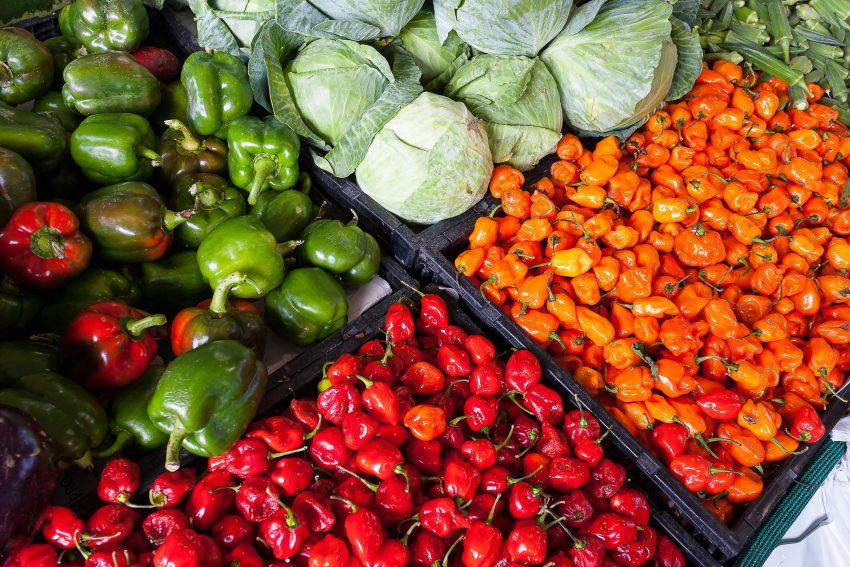In the bustling landscape of modern dining, fresh farm foods offer both health and taste, drawing individuals back to the roots of wholesome nutrition. The vibrant colors, the earthy aroma, and the robust flavors of farm-fresh produce are not just a feast for the senses but a nutritional powerhouse too. However, there exists a prevalent misconception that indulging in these culinary delights would significantly dent one’s wallet. This notion, though widespread, couldn’t be farther from the truth.
In this article, we debunk these myths, unveiling the secrets of how enjoying the goodness of farm-fresh foods can be both delightful for your palate and friendly to your budget.
Shop Smart at Farmers’ Markets
Farmers’ markets are vibrant hubs of community and freshness. One of the primary advantages lies in the direct access they provide to local farmers. Here, the food chain shortens, allowing you to converse directly with the growers. This connection fosters transparency about farming practices, ensuring that the produce you buy is not only fresh but often organic and sustainably sourced. Additionally, the lack of intermediaries means that prices are often lower, making farmers’ markets an economical choice for budget-conscious shoppers.
Tips for Effective Bargaining and Negotiation
- Start by doing a lap around the market to understand the price range for different items.
- Engage farmers in friendly conversations; they appreciate genuine interest and are more likely to offer discounts to regular customers.
- Bundle purchases; farmers often give discounts for bulk buying.
- Don’t shy away from negotiating politely, especially towards the end of the market day when vendors might want to sell remaining stock.
- Consider investing in a market membership or loyalty program if available. These programs often provide exclusive discounts, early access to the freshest produce, and sometimes even freebies.
Join Community Supported Agriculture (CSA) Programs
Community Supported Agriculture (CSA) program involves individuals purchasing shares of a local farm’s produce in advance. In return, participants receive a regular supply of freshly harvested goods, often spanning fruits, vegetables, herbs, dairy products, and even artisanal items. The cost-saving benefits of CSAs are manifold. The traditional supply chain is streamlined, eliminating middlemen. Additionally, CSA members often receive a diverse assortment of products, ensuring value for money and a continuous supply of seasonal delights.
Variety of Fresh Produce and Products Available Through CSA Memberships
CSA memberships open the door to a cornucopia of fresh produce and locally crafted items. Imagine receiving a weekly bounty that mirrors the changing seasons – plump tomatoes in summer, crisp apples in fall, and hearty root vegetables in winter. Beyond the staples, CSA programs often surprise members with unique products like artisanal cheeses, homemade preserves, or farm-fresh eggs. These varied offerings not only cater to your nutritional needs but also encourage culinary creativity, fostering a deeper connection to the land and the people cultivating it.
Choosing the Right CSA Program
- Start by evaluating the farm’s offerings – does it align with your dietary needs? Are you looking for a mix of fruits, vegetables, or specialty items?
- Next, assess the pickup or delivery options; convenience is key to sustaining your commitment. Consider the farm’s location – proximity often means fresher produce and reduced environmental impact.
- Lastly, delve into the farm’s practices; if organic or sustainable farming is a priority for you, ensure the farm’s values align with yours.
Grow Your Own: The Art and Joy of Home Gardening
Home gardening’s economic advantages are substantial; the initial investment in seeds and gardening supplies quickly pays off with the bountiful harvests you’ll reap. Consider the elimination of grocery bills for store-bought produce, and the savings become significant over time. Moreover, with careful planning and crop rotation, your garden can yield a continuous supply, ensuring a fresh and cost-effective source of nutrition right from your backyard.
Beginner-Friendly Gardening Tips and Tricks
- Focus on crops that are relatively easy to grow, such as tomatoes, herbs like basil and mint, and leafy greens like lettuce and spinach.
- Embrace organic practices to keep your garden pesticide-free, promoting healthier produce.
- Regular watering, pruning, and pest control are essential tasks that ensure your garden remains vibrant and productive.
Savings and Satisfaction of Harvesting Your Own Fresh Produce
The satisfaction of harvesting your own produce goes beyond financial savings; it’s a deeply fulfilling experience. The flavor of homegrown fruits and vegetables is unparalleled – ripe tomatoes bursting with sweetness, crisp cucumbers, and aromatic herbs that enhance every dish. The joy of plucking your ingredients just moments before they hit the pot is unmatched. Additionally, the savings accumulate over time, making each meal a testament to your efforts and the abundance of your garden. Imagine the pleasure of sharing your surplus harvests with neighbors or preserving them for the winter months through canning and freezing.
Harmonizing with Nature: The Economical Art of Seasonal Eating
Seasonal eating revolves around consuming foods that are naturally harvested during specific times of the year in your region. When fruits and vegetables are in season, local markets are flooded with surplus, leading to lowered prices due to increased availability. Conversely, when out of season, produce must be imported, leading to higher costs for consumers.
Recipes and Meal Planning Ideas Tailored to Each Season’s Produce
Each season brings a unique bounty of flavors waiting to be explored. In spring, indulge in vibrant salads featuring crisp greens, radishes, and early strawberries. Summer invites you to savor the sweetness of ripe peaches, tomatoes, and corn, perfect for refreshing gazpachos and grilled vegetable platters. Fall offers a cornucopia of hearty root vegetables like pumpkins, sweet potatoes, and Brussels sprouts, ideal for warming soups and roasted dishes. Winter brings comforting stews with ingredients like kale, carrots, and winter squashes.
Online Platforms and Apps for Discounts
Apps like Farm Fresh To You, LocalHarvest, and FreshDirect offer extensive selections of locally sourced fruits, vegetables, dairy, meats, and more. What sets these platforms apart are the exclusive deals and discounts they provide, making farm-fresh foods accessible and affordable.
How to Navigate These Platforms and Maximize Savings
Most apps have user-friendly interfaces, allowing you to filter products based on your preferences, dietary requirements, and budget constraints. Utilize search functions to find the best deals on specific items or explore bundled packages for overall savings. Subscribing to newsletters and notifications from these platforms can keep you informed about flash sales, seasonal discounts, and special offers. Additionally, many apps offer loyalty programs or reward points that accumulate with each purchase, translating into further savings on your future orders.
Exclusive Deals and Discounts
Online grocery shopping and delivery services, often affiliated with local farms and producers, offer exclusive deals that are not available in physical stores. These platforms negotiate directly with farmers and negotiate bulk discounts, passing the savings on to consumers. Subscription-based services often provide additional perks, such as priority access to limited-stock items or members-only discounts on premium products.
DIY Preservation: Extending the Shelf Life of Fresh Farm Foods
Preserving the harvest through canning, freezing, and drying is a time-honored tradition that not only extends the shelf life of fresh farm foods but also captures their essence for later enjoyment.
- Canning involves sealing food in jars after heat processing, effectively killing bacteria and ensuring long-term preservation. Ensure jars are sterilized, and follow precise recipes to maintain acidity levels for safe preservation.
- Freezing is ideal for preserving fruits, vegetables, and meats while maintaining their texture and flavor. Freezing demands proper blanching, quick freezing, and airtight packaging.
- Drying removes moisture from food, preventing bacterial growth and spoilage. Drying involves careful preparation and monitoring to prevent mold.
Economical Advantage of Preserving Surplus Fresh Farm Foods
Preserving surplus fresh farm foods not only prevents waste but also delivers significant economic advantages. Additionally, DIY preservation reduces the need for frequent grocery trips, saving both time and money in the long run. Moreover, home-preserved foods make thoughtful, cost-effective gifts, fostering a sense of community and sustainability.
Conclusion: Harvesting Savings, Nourishing Communities
We’ve unearthed a treasure trove of strategies for savoring farm-fresh delights without emptying your wallet. Each tactic not only saves money but deepens your connection to the earth.
Cherish the savings, and celebrate the joy of each meal, knowing that you’re not just nourishing yourself but also nurturing a world where every bite counts. Happy, affordable, farm-fresh feasting awaits!


